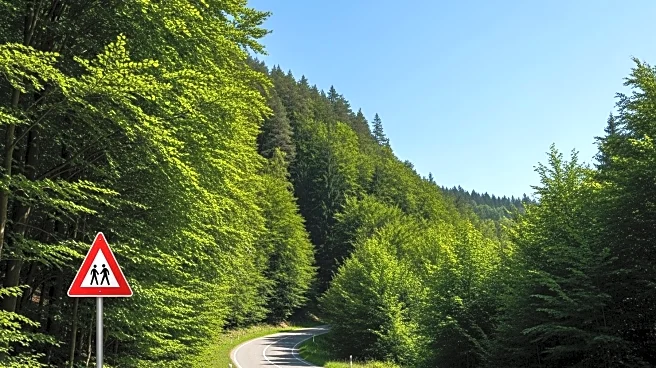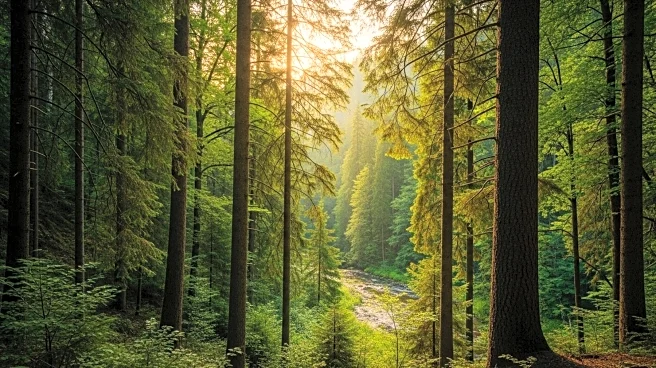What's Happening?
The Trump administration is initiating the process to rescind the 2001 Roadless Rule, which protects nearly 60 million acres of national forest lands from road construction. The U.S. Department of Agriculture argues that removing these protections will aid firefighters by allowing quicker access to suppress wildfires. However, forest ecologists and fire scientists warn that more roads could lead to increased wildfire occurrences, as roads are often sites of ignition due to human activity. The Roadless Rule has been a contentious issue since its inception, with debates over its impact on wildfire management and timber production.
Why It's Important?
Rescinding the Roadless Rule could significantly impact U.S. forest management and wildfire suppression strategies. While the administration claims it will enhance firefighting capabilities, critics argue it may increase wildfire risks and alter forest ecosystems. The move is seen by some environmental groups as a push to boost timber production rather than a genuine effort to mitigate fire hazards. This decision could affect the balance between conservation efforts and economic interests in national forests, potentially leading to legal challenges and public opposition.
What's Next?
The public comment period on the proposed rescission ends on September 19, allowing stakeholders to express their views. If the rule is rescinded, it could lead to increased road construction in national forests, impacting forest ecosystems and potentially increasing timber production. Environmental groups may challenge the decision legally, and states could also oppose the move, leading to further litigation. The administration's approach to forest management will likely continue to be a point of contention among policymakers, environmentalists, and industry leaders.
Beyond the Headlines
The proposal to rescind the Roadless Rule highlights broader issues of environmental policy and land management in the U.S. It raises questions about the balance between economic development and conservation, and the role of government in managing natural resources. The decision could set a precedent for future policies regarding protected lands and influence how the U.S. addresses climate change and biodiversity conservation.












